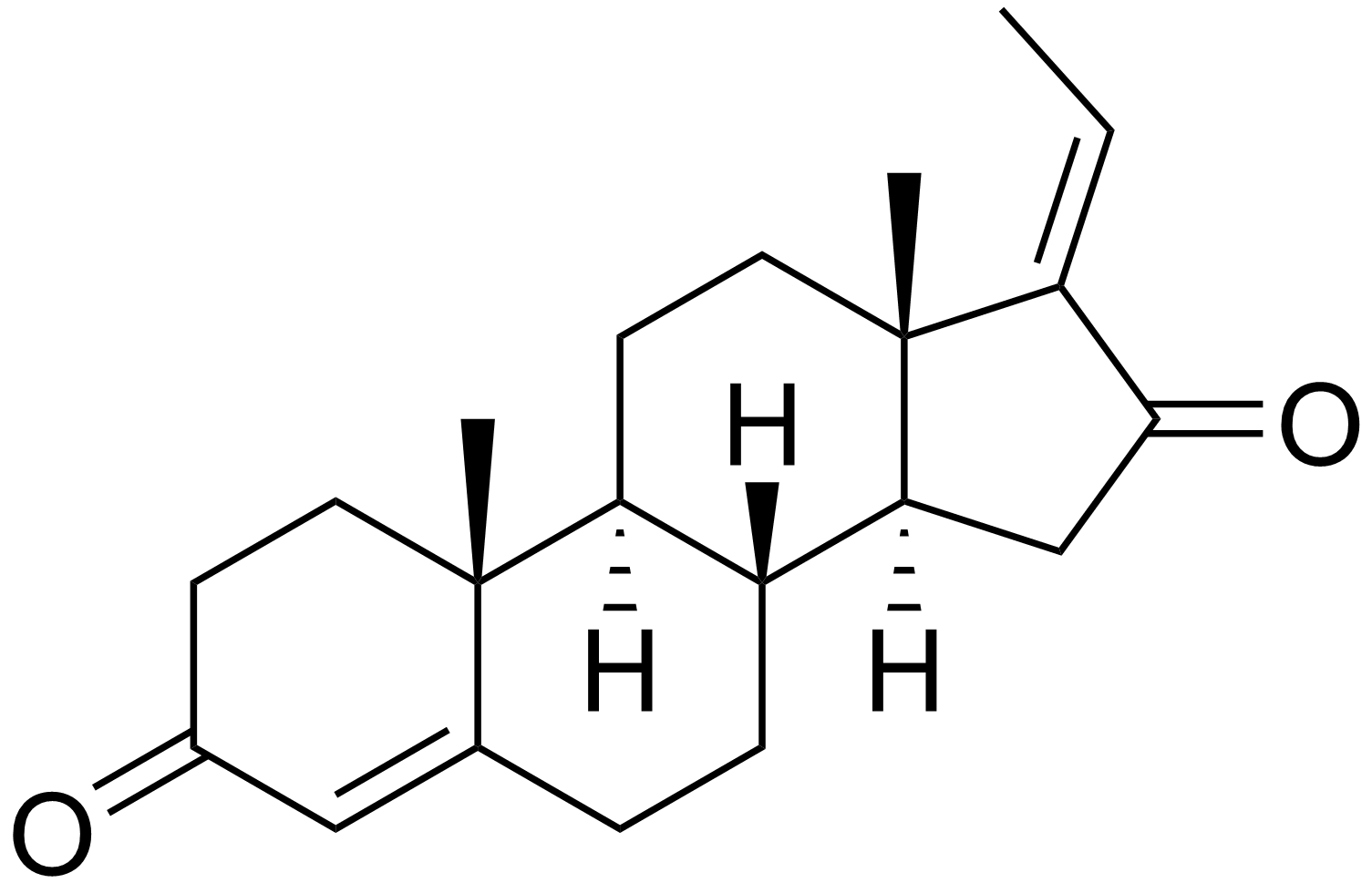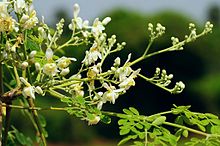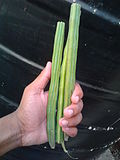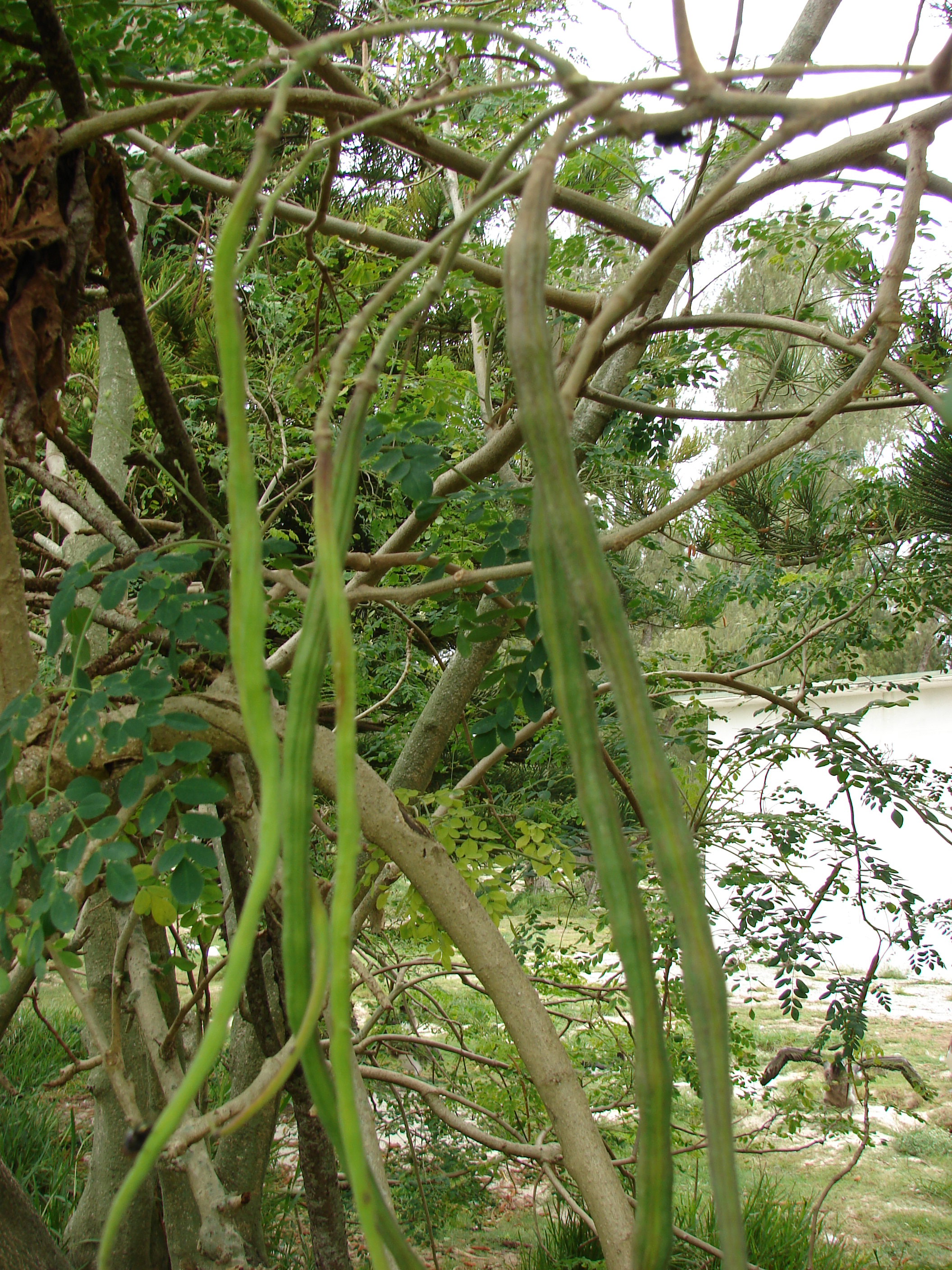
The molecule of about 2 nm in size is kept stable between two metal electrodes for several days. Image: Christian Grupe/KIT
A team of physicists has succeeded in performing an extraordinary experiment: They demonstrated how magnetism that generally manifests itself by a force between two magnetized objects acts within a single molecule. This discovery is of high significance to fundamental research and provides scientists with a new tool to better understand magnetism as an elementary phenomenon of physics. The researchers published their results in the latest issue of Nature Nanotechnology.
The smallest unit of a magnet is the magnetic moment of a single atom or ion. Researchers in Germany wanted to find out whether the magnetism of a pair of magnetic moments can be measured electrically in a single molecule. To do this, they succeeded in performing an extraordinary experiment which shows how magnetism that generally manifests itself by a force between two magnetized objects acts within a single molecule.
]]>
This model shows the role of vesicles, vesicle chains and membrane tubes in M. xanthus biofilms. The scientists believe these connections help cells exchange signals and material. Image: Auer laboratory
Using several imaging techniques, Lawrence Berkeley National Laboratory scientists found that a common soil bacterium stays connected by a network of chain-like membranes. They believe the bacterium uses its network to coordinate social activities-such as evading bacterial enemies and snaring prey-without revealing its location. Even bacteria use social networks
read at
]]> Cyclotides are head-to-tail cyclic peptides in plants
Cyclotides are head-to-tail cyclic peptides in plants
Cyclotides are plant-derived peptides of approximately 30 amino acids. They have the characteristic structural features of a head-to-tail cyclized backbone and a cystine knot arrangement of their three conserved disulfide bonds. Their unique structural features lead to exceptional stability. This and their amenability to chemical synthesis have made it possible to use cyclotides as templates in protein engineering and drug design applications.
David J Craik, University of Queensland, Brisbane, Australia, whose laboratory is working over 20 years in the field, summarizes the history of cyclotides
http://www.chemistryviews.org/details/news/5012211/History_of_Cyclotides.html
more info on cyclotides

Figure 1. Structure and sequence of the prototypic cyclotide kalata B1
Cyclotides are small disulfide-rich proteins that have the unusual feature of a cyclic backbone (hence the name cyclo – peptides). They contain six conserved cystine residues that are arranged in a cystine knot topology in which two disulfide bonds and their connecting backbone segments form an embedded ring in the structure that is penetrated by a third disulfide bond, as shown below.
Cyclotides have a range of interesting biological activities including anti-HIV and neurotensin inhibition, anti-microbial activity and insecticidal activity. They are found in a variety of tropical plants from the Rubiaceae and Violaceae families.
 |
| The structure of kalata B1 showing the distorted beta-sheet topology and the loop nomenclature enabled by the cyclic backbone. |
Cyclotides are small disulfide rich peptides isolated from plants.Typically containing 28-37 amino acids, they are characterized by their head-to-tail cyclised peptide backbone and the interlocking arrangement of their three disulfide bonds. These combined features have been termed the cyclic cystine knot (CCK) motif (Figure 1). To date, over 100 cyclotides have been isolated and characterized from species of the Rubiaceae, Violaceae, and Cucurbitaceae families. Cyclotides have also been identified in agriculturally important families such as the Fabaceae and Poaceae.,
Cyclotides have been reported to have a wide range of biological activities, including anti-HIV, insecticidal, anti-tumour, antifouling, anti-microbial, hemolytic, neurotensinantagonism, trypsin inhibition, and uterotonic activities.[4][5][6] An ability to induceuterine contractions was what prompted the initial discovery of kalata B1.[7]
The potent insecticidal activity of cyclotides kalata B1 and kalata B2 has prompted the belief that cyclotides act as plant host-defence agents (Figure 2). The observations that dozens or more cyclotides may be present in a single plant and the cyclotide architecture comprises a conserved core onto which a series of hypervariable loops is displayed suggest that, cyclotides may be able to target many pests/pathogens simultaneously.
]]>

E-Guggulsterone

Z-Guggulsterone
http://www.omicsonline.org/2161-0444/2161-0444-2-e105.php?%20aid=9899
Citation: Xiao M, Xiao D (2012) Gugulipid, an Extract of Ayurveda Medicine Plant Commiphora Mukul as a Potent Agent for Cancer Chemoprevention and Cancer Chemotherapy. Med chem 2:e105.
doi:10.4172/2161-0444.1000e105
Department of Urology, University of Pittsburgh Cancer Institute, University of Pittsburgh School of Medicine, University of Pittsburgh, Pittsburgh, Pennsylvania 15232, USA
| Gugulipid (GL), an extract of Commiphora mukul, has been safely used for thousands of years in the Indian Ayurveda medicine practice for the treatment of different ailments and has been used recently in many clinical trials that focused on its cholesterol-lowering effect. GL has recently been paid great attention for its cancer chemopreventive and chemotherapeutic potential. Z- and E-Guggulsterone have been identified as the major active components of GL. Studies have shown that GL as well as Guggulsterones can inhibit cancer growth in vitro and in vivo and lead to prevention of cancer initiation, promotion and progression. Although the action mechanisms of GL are not completely understood, GL has been revealed as a multitargeted cancer chemopreventive and chemotherapeutic agent. The increased understanding of the anti-cancer activity of GL and its molecular targets would allow us to improve its efficacies in different types of human cancers by single and/or combination strategies. | |||||
Gugulipid (GL, guggul, guggal, or gugul lipid) is the ethyl acetate extract of gum guggul resin (raw material) that is harvested directly from the Commiphora mukul tree (family name: Burseraceae; synonyms: Hook, Bandari, Balsamodendron mukul, and Commiphora Wightii). GL is a highly valued botanical medicine. As aforementioned, GL has been safely used for thousands of years in the Indian Ayurvedic medicine for the treatment of different ailments, including lipid disorders, rheumatoid arthritis, ulcers, osteoarthritis, bone fractures, epilepsy and obesity . In 1986, GL was granted approval in India for marketing as a lipid lowering drug (Indian Pharmacopeia 2007: pgs. 2038-2040). Several products of standardized formulations of Commiphora mukul are already in human use as cholesterollowering agents . The Z- and E-forms of guggulsterone (Gug, 4,17(20)-pregnadie-3, 16-dione) have been identified as major active components of GL . GL and its active component z-Gug have been used in many clinical trials that focused on its cholesterol-lowering effect . Numerous studies continue to support that many edible phytochemicals have cancer chemopreventive and chemotherapeutic potential . These finding motivated the investigation of the cancer chemopreventive and chemotherapeutic potential of GL and its active components.Guggulsterone is a plant steroid found in the resin of the guggul plant, Commiphora mukul. Guggulsterone can exist as either of two stereoisomers, E-guggulsterone and Z-guggulsterone. In humans, it acts as an antagonist of the farnesoid X receptor, which was once believed to result in decreased cholesterol synthesis in the liver. Several studies have been published that indicate no overall reduction in total cholesterol occurs using various dosages of guggulsterone, and levels of low-density lipoprotein (“bad cholesterol”) increased in many people.[1][2] Nevertheless, guggulsterone is an ingredient in many nutritional supplements.
Scheme 1. Stereoselective synthesis of E-guggulsterone (1) from 4-androsten-3,17-dione (5). (i) CH(OEt)3, p-TSA, THF/EtOH, quantitative; (ii) EtPPh3Br, t-BuOK, THF, reflux; (iii) HCl, THF, 95% from 6; (iv) SeO2, t-BuO2H, 90%; (v) (COCl)2, DMSO, Et3N, CH2Cl2, 85% |
|||||

Moringa oleifera
The Drumstick Plant
08 February 2013, Organic India, a manufacturer of herb-based functional supplements, has launched organic single ingredient Moringa products in the US.
Available in both capsule and powder formulations, the product made from powdered leaves of Moringa oleifera tree contains vitamin A, B1, B3, B12, iron, magnesium, potassium, amino acids, and polyphenols and is used for restoring internal imbalances.
Organic India national sales manager Heather Henning said the ancient therapeutic Moringa oleifera plant has been used for years and has seen increasing popularity amongst mainstream consumers worldwide.
Moringa oleifera leaf powder
“Millions of people globally use Moringa for essential nutrition — now, the US distribution channel will have access to this extraordinary plant with USDA organic certification,” Henning added.
The company said Moringa supplement, which has more B12 than steak, more vitamin A than eggs, and more calcium than milk, will be unveiled to the public at Expo West 2013.
Sonjna (Moringa oleifera) leaves with flowers
Moringa oleifera (synonym: Moringa pterygosperma) is the most widely cultivated species of the genus Moringa, which is the only genus in the family Moringaceae. English common names include moringa, and drumstick tree, from the appearance of the long, slender, triangular seed pods, horseradish tree, from the taste of the roots which resembles horseradish, or ben oil tree, from the oil derived from the seeds. The tree itself is rather slender, with drooping branches that grow to approximately 10m in height. In cultivation, it is often cut back annually to 1–2 meters and allowed to regrow so the pods and leaves remain within arm’s reach.[1][2]
In developing countries, moringa has potential to improve nutrition, boost food security, foster rural development, and support sustainable landcare.[3] It may be used as forage forlivestock, a micronutrient liquid, a natural anthelmintic and possible adjuvant.[2][4][5]

The moringa tree is grown mainly in semiarid, tropical, and subtropical areas, corresponding in the United States to USDA hardiness zones 9 and 10. While it grows best in dry, sandy soil, it tolerates poor soil, including coastal areas. It is a fast-growing, drought-resistant tree that is native to the southern foothills of the Himalayas in northwestern India.
Cultivation in Hawai’i, for commercial distribution in the United States, is in its early stages.[6]
“India is the largest producer of moringa, with an annual production of 1.1 to 1.3 million tonnes of tender fruits from an area of 380 km². Among the states, Andhra Pradesh leads in both area and production (156.65 km²) followed by Karnataka (102.8 km²) and Tamil Nadu(74.08 km²). In other states, it occupies an area of 46.13 km². Tamil Nadu is the pioneering state in·so·much as it has varied genotypes from diversified geographical areas and introductions from Sri Lanka.”[7]
Moringa is grown in home gardens and as living fences in Tamil Nadu Southern India and Thailand, where it is commonly sold in local markets.[8] In the Philippines, it is commonly grown for its leaves, which are used in soup.[9] Moringa is also actively cultivated by theWorld Vegetable Center in Taiwan, a center for vegetable research with a mission to reduce poverty and malnutrition in developing countries through improved production and consumption of vegetables. Tamil Nadu Southern India has Moringa in its folk stories and as well considered to be auspicious to grow in home. Interestingly the name in Tamil is Moorungai which sounds same as Moringa.
It is also widely cultivated in Africa, Cambodia, Nepal, Indonesia, Malaysia, Mexico, Central and South America, and Sri Lanka
An Indian drumstick (cut)
| Nutritional value per 100 g (3.5 oz) | |
|---|---|
| Energy | 64 kcal (270 kJ) |
| Carbohydrates | 8.28 g |
| – Dietary fiber | 2.0 g |
| Fat | 1.40 g |
| Protein | 9.40 g |
| Water | 78.66 g |
| Vitamin A equiv. | 378 μg (47%) |
| Thiamine (vit. B1) | 0.257 mg (22%) |
| Riboflavin (vit. B2) | 0.660 mg (55%) |
| Niacin (vit. B3) | 2.220 mg (15%) |
| Pantothenic acid (B5) | 0.125 mg (3%) |
| Vitamin B6 | 1.200 mg (92%) |
| Folate (vit. B9) | 40 μg (10%) |
| Vitamin C | 51.7 mg (62%) |
| Calcium | 185 mg (19%) |
| Iron | 4.00 mg (31%) |
| Magnesium | 147 mg (41%) |
| Manganese | 0.36 mg (17%) |
| Phosphorus | 112 mg (16%) |
| Potassium | 337 mg (7%) |
| Sodium | 9 mg (1%) |
| Zinc | 0.6 mg (6%) |
| Percentages are relative to US recommendations for adults. Source: USDA Nutrient Database |
|
| Nutritional value per 100 g (3.5 oz) | |
|---|---|
| Energy | 37 kcal (150 kJ) |
| Carbohydrates | 8.53 g |
| – Dietary fiber | 3.2 g |
| Fat | 0.20 g |
| Protein | 2.10 g |
| Water | 88.20 g |
| Vitamin A equiv. | 4 μg (1%) |
| Thiamine (vit. B1) | 0.0530 mg (5%) |
| Riboflavin (vit. B2) | 0.074 mg (6%) |
| Niacin (vit. B3) | 0.620 mg (4%) |
| Pantothenic acid (B5) | 0.794 mg (16%) |
| Vitamin B6 | 0.120 mg (9%) |
| Folate (vit. B9) | 44 μg (11%) |
| Vitamin C | 141.0 mg (170%) |
| Calcium | 30 mg (3%) |
| Iron | 0.36 mg (3%) |
| Magnesium | 45 mg (13%) |
| Manganese | 0.259 mg (12%) |
| Phosphorus | 50 mg (7%) |
| Potassium | 461 mg (10%) |
| Sodium | 42 mg (3%) |
| Zinc | 0.45 mg (5%) |
| Percentages are relative to US recommendations for adults. Source: USDA Nutrient Database
|
|




